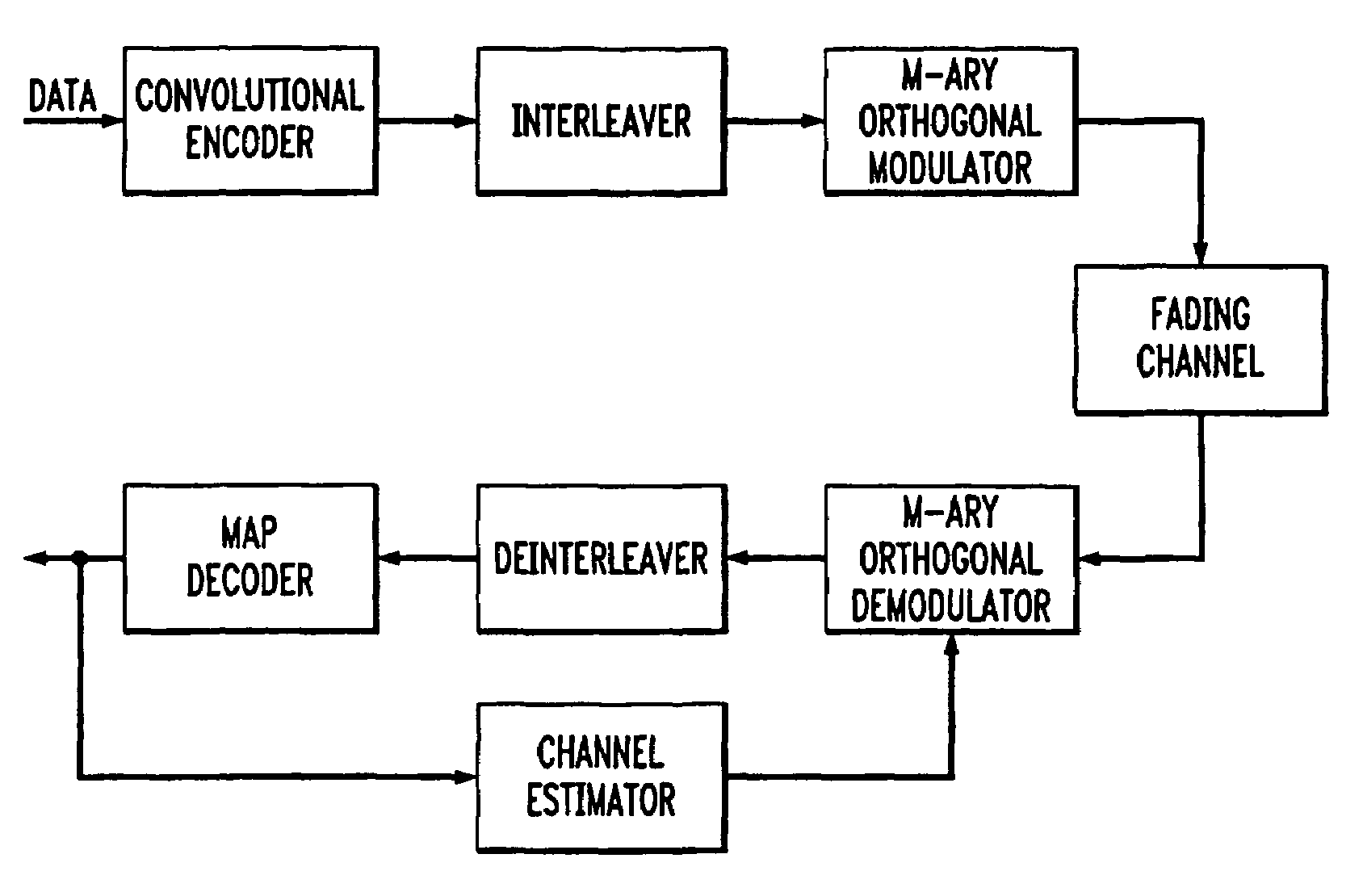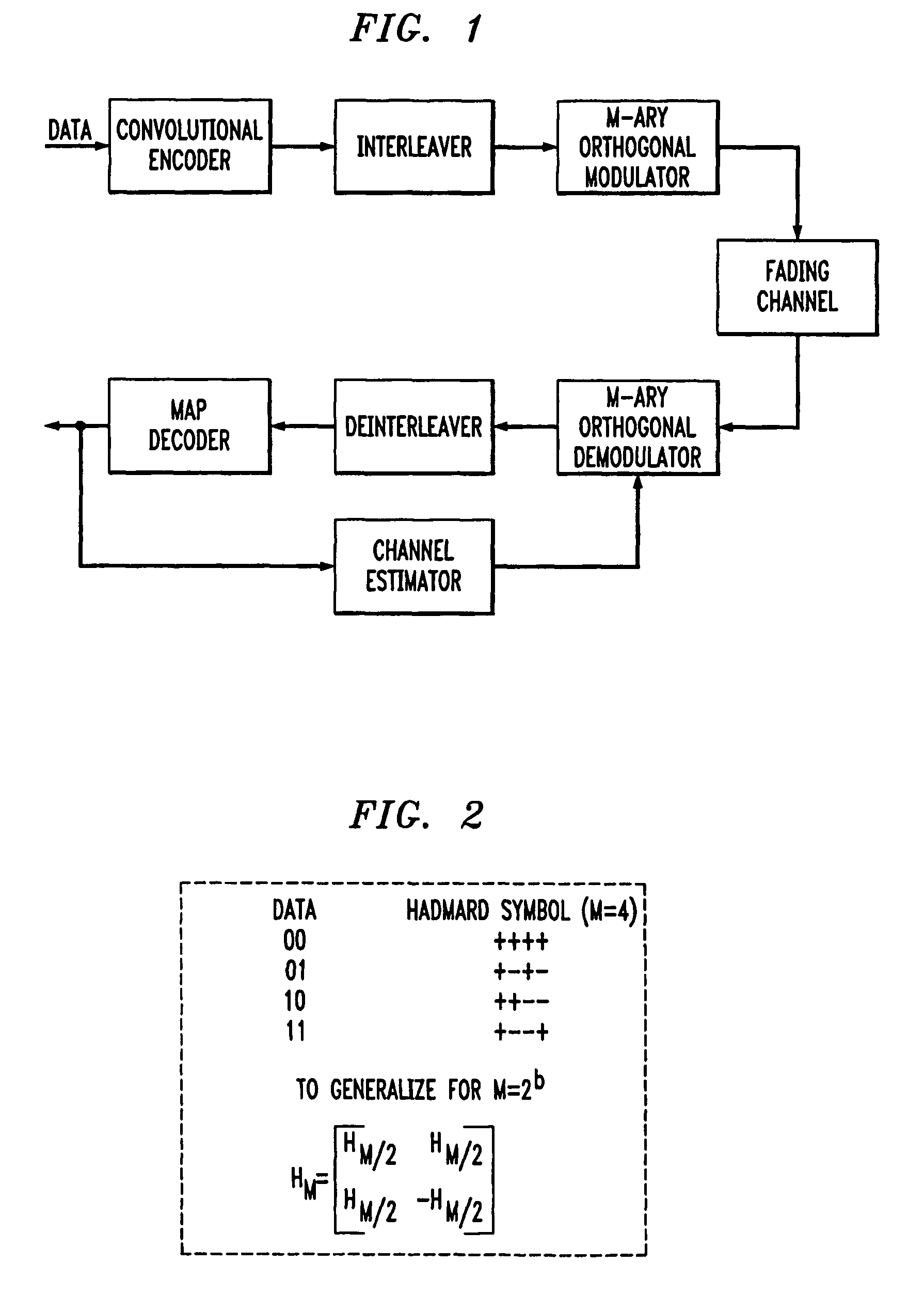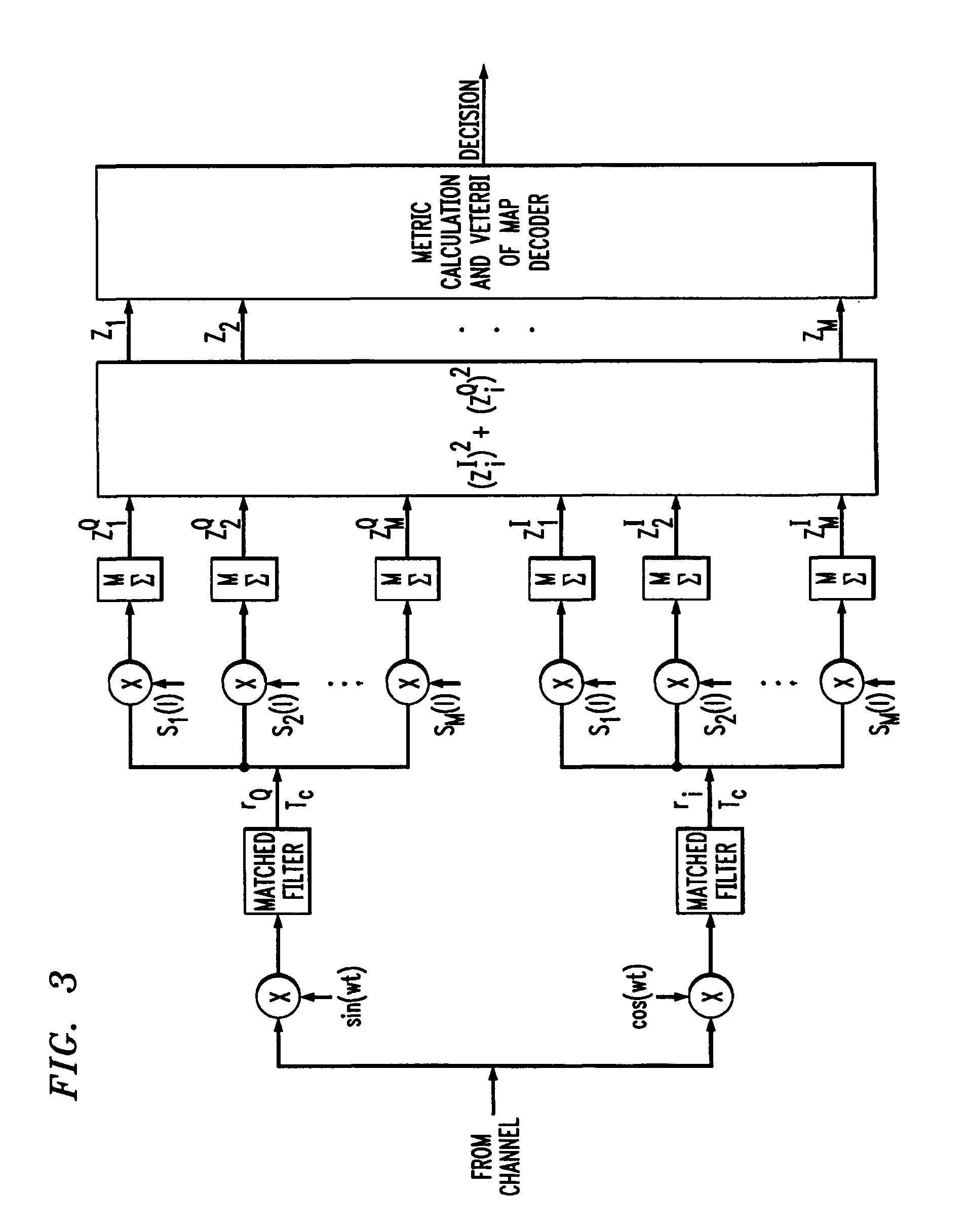De-modulation of MOK(M-ary orthogonal modulation)
a technology of orthogonal modulation and demodulation, applied in the field of detection and demodulation of mary orthogonal signals, can solve problems such as complex implementation, and achieve the effect of enhancing the performance of cck and significantly worse performance of non-coherent detection of cck
- Summary
- Abstract
- Description
- Claims
- Application Information
AI Technical Summary
Benefits of technology
Problems solved by technology
Method used
Image
Examples
Embodiment Construction
[0032]FIG. 1 shows the block diagram of the system including both modulation and demodulation as well as the fading channel over which the MOK signal is transmitted. On the transmission (modulation) side the data is input to a convolution encoder, which encodes the data. The encoded data is output from the convolutional encoder into an interleaver. The output of the interleaver is input into an M-ary orthogonal modulator, which outputs the signal to a channel. On the receiver (demodulation) side the signal is detected and demodulated by an M-ary orthogonal demodulator. The output of the demodulator is input to a deinterleaver. The output if the deinterleaver is input to the MAP decoder, which decodes the data. Channel estimation is then performed by a channel estimator. The channel estimation metrics are then introduced into the M-ary orthogonal non-coherent demodulator in a feedback model to re-demodulate the signal coherently. The steps of interleaving and de-interleaving are opti...
PUM
 Login to View More
Login to View More Abstract
Description
Claims
Application Information
 Login to View More
Login to View More - R&D
- Intellectual Property
- Life Sciences
- Materials
- Tech Scout
- Unparalleled Data Quality
- Higher Quality Content
- 60% Fewer Hallucinations
Browse by: Latest US Patents, China's latest patents, Technical Efficacy Thesaurus, Application Domain, Technology Topic, Popular Technical Reports.
© 2025 PatSnap. All rights reserved.Legal|Privacy policy|Modern Slavery Act Transparency Statement|Sitemap|About US| Contact US: help@patsnap.com



